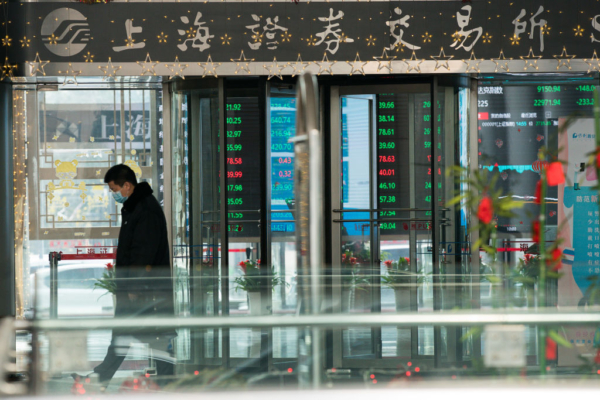On Thursday (17th), both A-shares and Hong Kong stocks experienced a decline. The three major A-share indexes all closed lower, with the Hong Kong stock market briefly falling below the key 20000 level, dropping by over 300 points at most, with a trading volume of less than 200 billion Hong Kong dollars.
October 17th saw the three major A-share indexes opening high but closing low. By the end of the trading day, the Shanghai Composite Index was down by 1.05% to 3169 points, the Shenzhen Component Index fell by 0.74% to 9891 points, and the ChiNext Index dropped by 0.32% to 2033 points. Real estate stocks across the board experienced a decline.
The overall market trend showed more declines than increases, with nearly 3500 stocks in Shanghai, Shenzhen, and Beijing all witnessing declines.
Real estate, liquor, construction materials, retail, gas, banking, and other sectors such as rental and property management saw the highest drop rates. Real estate stocks in general were in decline, with companies like China Fortune Land Development, Powerlong Real Estate Development, and Country Garden Holdings hitting the limit down, while Poly Developments and Green Town Holdings fell by over 7%.
As for the Hong Kong stock market, the Hang Seng Index dropped by 1.02% to 20079 points, temporarily falling below the 20000 point mark to a low of 19977 points. The turnover shrank to 191.3 billion Hong Kong dollars. The Hang Seng TECH Index was down by 1.19% to 4349 points, while the China Enterprises Index dropped by 88 points or 1.22%, closing at 7179 points.
In terms of individual stocks, property stocks experienced extreme fluctuations and the largest declines, with companies like Longfor Group, China Overseas Land & Investment, and China Resources Land among those seeing significant drops. The largest decliners were R&F Properties, down by 29.03%, and Sunac China Holdings, down by 27%.
On the news front, the Chinese national government held a joint press conference with the Ministry of Housing and Urban-Rural Development, the Ministry of Finance, the Ministry of Natural Resources, the People’s Bank of China, and the China Banking and Insurance Regulatory Commission. They introduced a policy package to stabilize the real estate market, including the removal of restrictions such as purchase limits, sales restrictions, and price caps, as well as reducing interest rates and down payment ratios for housing provident fund loans and promoting the renovation of old communities and dilapidated houses. The scale of loans for projects on the approved list will be increased to 4 trillion yuan.
However, the market was disappointed by the announcement, leading to significant drops in real estate stocks in both the A-share and Hong Kong stock markets.
Market analysis suggests that the stock market decline in Hong Kong may reflect the fact that the new measures announced by Beijing today did not meet market expectations. An investor from East China mentioned that the market had already anticipated the policies of the Ministry of Housing and Urban-Rural Development, and currently lacks momentum, leading to short-term consolidation with reduced trading volume.
A long-term analysis by “ChinaFacts” on Chinese politics and economy, stated on social media platform X, commented, “The Ministry of Housing and Urban-Rural Development announced the start of the currency conversion settlement for the renovation of one million sets of old communities in urban villages, which is considered a major initiative by the leadership. However, in reality, this is the total number of sets for dilapidated house renovations and urban village renovations nationwide, but the effort seems to be inadequate.
“In the previous round of shantytown renovation, how many sets were renovated? 4.7 million in 2014, 6.01 million in 2015, 6.06 million in 2016, 6.09 million in 2017, and 6.26 million in 2018. Let’s achieve the level of 2014 before talking about effectiveness.
“The 4 trillion on the list also seems impressive, but 1.4 trillion of this list has already been ‘approved and allocated’ for loans. How does the industry feel about it? It’s virtually non-existent.
“The reasons are twofold: 1. The money coming into the projects basically cannot be moved, merely to ensure the completion of property delivery; 2. More importantly, the bulk of the so-called 1.4 trillion is renewals and extensions (the specific proportion is unclear).”

